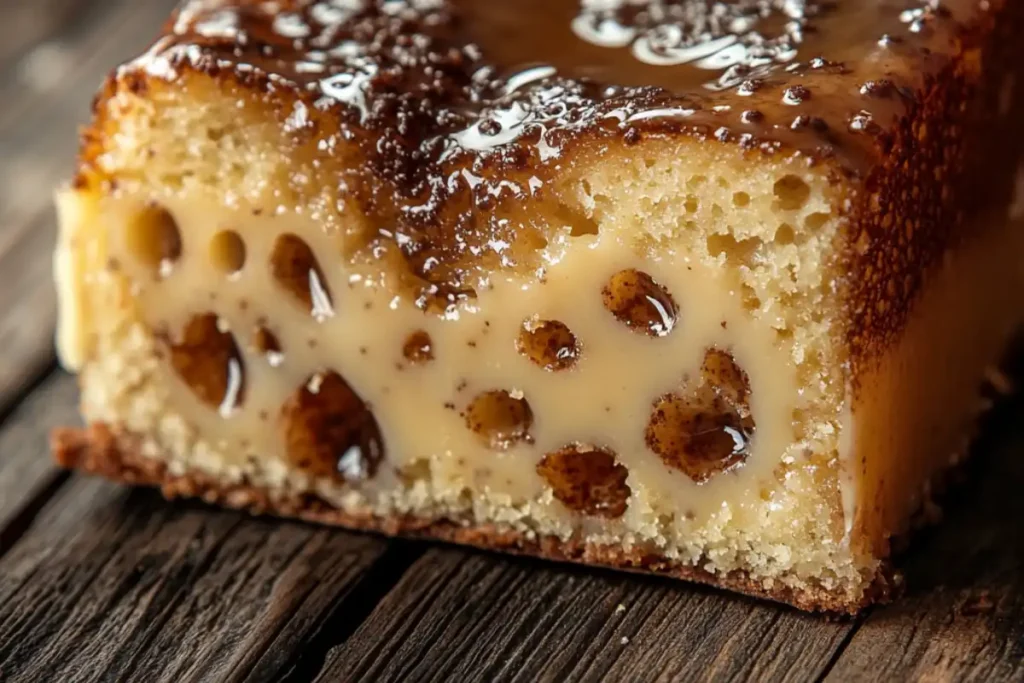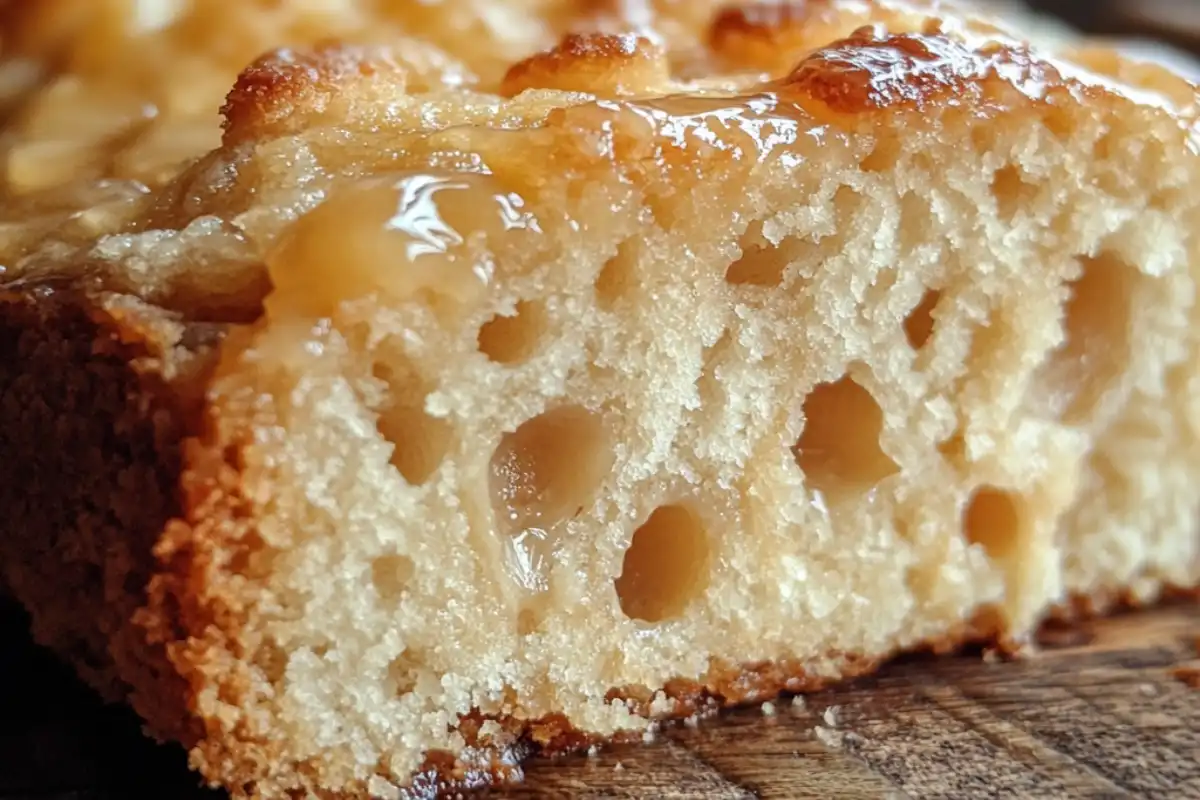A poke cake is a deliciously moist dessert that stands out because of its signature holes filled with rich liquid or cream. However, when making this cake, a common problem many bakers face is ending up with a soggy texture. Instead of a perfectly tender cake infused with sweet flavors, you might find your dessert overly wet and unappealing. In this guide, we’ll explore the reasons why your poke cake could turn soggy and offer practical solutions to prevent it from happening.
Understanding the Causes of a Soggy Poke Cake
1. Overloading the Cake with Too Much Liquid or Filling
One of the primary reasons a poke cake turns soggy is the use of excessive liquid or filling. While it’s tempting to pour in as much caramel, jello, or cream as possible, too much moisture can oversaturate the cake. The result is an overly wet texture that feels mushy rather than moist. To avoid this issue, measure the amount of liquid you’re adding and ensure it’s proportionate to the cake’s structure.
2. Poking Too Many Holes
Another common mistake is making too many holes in the cake. While the poke technique is essential for adding flavor, overdoing it can cause an imbalance in texture. If the holes are too close together, the liquid doesn’t have space to spread evenly, leading to pooling and sogginess. Spacing the holes properly and using a consistent tool, such as the handle of a wooden spoon, helps prevent this issue.
For more cake baking tips, check out this guide on cake baking, which offers insights into how to create the perfect texture for your cakes.
3. Pouring Liquid While the Cake is Too Hot
Timing is crucial when adding liquid or filling to a poke cake. If the cake is still hot when you pour the liquid, the heat can cause it to absorb too quickly and unevenly, leading to a soggy mess. Always allow the cake to cool properly before poking holes and adding the filling. This ensures that the cake maintains its structure while absorbing the liquid in a balanced manner. Learn more about how to properly cool cakes to avoid this common pitfall.
For more poke cake inspiration, you might want to explore other options like this Strawberry Crunch Poke Cake for a fruity twist on the classic poke cake method.
4. Using the Wrong Liquid Consistency
The type of liquid or filling you use can greatly impact the cake’s texture. Thinner liquids, like runny syrups or juices, are more likely to flood the cake and create a soggy texture. On the other hand, thicker fillings like puddings, creams, or ganache are better suited for maintaining the cake’s integrity while still providing moisture. Opting for these types of fillings gives you more control over the final texture.
If you’re making a rich and decadent poke cake, such as a German Chocolate Poke Cake, using the right consistency in the filling is crucial to avoid sogginess.
How to Prevent a Soggy Poke Cake
5. Tips for Properly Poking the Cake
The key to a successful poke cake lies in how you create the holes. Here are some tips:
- Space the holes evenly: Keep them about 1 inch apart to avoid oversaturation.
- Use the right tool: A wooden spoon handle is typically the perfect size for creating consistent holes.
- Don’t overdo it: A moderate number of evenly spaced holes is sufficient for good flavor distribution without causing sogginess.
6. Cooling the Cake Before Adding Filling
As mentioned earlier, cooling your cake properly is essential. Here’s how to do it:
- Allow the cake to rest in the pan for 10-15 minutes after baking.
- Transfer the cake to a wire rack and let it cool completely for another 30 minutes.
- Once the cake is cool to the touch, it’s ready for poking and filling.
This process ensures that the cake has a stable structure and won’t collapse or become soggy when the filling is added.
7. Controlling the Amount of Filling
To avoid overloading your cake with too much liquid, follow these guidelines:
- Measure the filling: Use about 1 cup of filling for a standard 9×13 inch cake.
- Layer the filling slowly: Pour the liquid in stages, allowing it to fully absorb before adding more.
- Test the cake’s capacity: After the first layer, check the texture and see if the cake can handle more liquid without becoming soggy.
8. Choosing the Best Liquids and Fillings
To prevent sogginess, opt for thicker consistencies like:
- Puddings and custards: These are excellent for adding moisture without compromising the cake’s texture.
- Ganache or chocolate sauce: Adds richness while maintaining structural integrity.
- Fruit jams or purees: A great alternative to liquid-based fillings, offering flavor and moisture without the risk of sogginess.
For more information on the best liquids for baking, explore this resource on baking liquids that highlights options for different cake types.
Common Mistakes and How to Avoid Them
9. Over-Mixing the Batter
Over-mixing the batter can weaken the cake’s structure, making it more susceptible to becoming soggy. Mix the ingredients just until they are combined, and avoid overworking the batter.
10. Using Too Soft a Cake Base
Soft, delicate cakes like angel food or sponge cake may not hold up well as poke cakes. Opt for denser cakes like pound cake or a sturdy chocolate cake that can handle the added moisture.
11. Incorrect Baking Pan Size
Using a pan that’s too large or too small can lead to uneven baking and moisture distribution. Stick to the recommended 9×13 inch pan size for best results.

Recipe Variations to Prevent Sogginess
- Lighter Fillings: Use whipped cream or mousse instead of heavy syrups or creams.
- Layered Approach: Alternate layers of cake and filling to control moisture better.
- Adding Texture: Incorporate nuts, fruit, or coconut flakes to enhance the structure and reduce the risk of sogginess.
For more creative cake ideas, you might want to explore this Delicious Strawberry Earthquake Cake, which incorporates unique fillings and toppings in a fun way.
FAQs: Answering Common Questions About Soggy Poke Cakes
Why is my poke cake wet in the center?
Your cake may be wet in the center if you’ve added too much liquid or if the holes are too close together, causing pooling.
Can I fix a soggy poke cake?
Unfortunately, once a cake is soggy, it’s difficult to fully restore its texture. However, you can try freezing it to firm up the texture before serving.
How do I know when I’ve added too much liquid?
If the liquid starts pooling on the surface instead of absorbing into the cake, it’s a sign you’ve added too much.
Should I refrigerate a poke cake to prevent sogginess?
Yes, refrigerating a poke cake can help maintain its texture and prevent further moisture absorption.
Can certain cake mixes make poke cakes soggier?
Some cake mixes produce softer cakes, which may not hold up well with added moisture. Choose mixes designed for dense or firm cakes.
How do I store a poke cake without it becoming soggy?
Store the cake in an airtight container in the fridge. For best results, consume the cake within 2-3 days.
Conclusion
While poke cakes are known for their moist and flavorful texture, it’s easy to accidentally overdo it and end up with a soggy dessert. By controlling the amount of liquid, spacing the holes properly, and allowing your cake to cool before filling, you can avoid this common issue. Use thicker fillings and choose the right cake base to create a perfectly balanced poke cake that everyone will love. Follow these tips and enjoy a delicious dessert without the worry of sogginess!


6 thoughts on “Why is My Poke Cake Soggy? How to Prevent a Common Baking Problem”